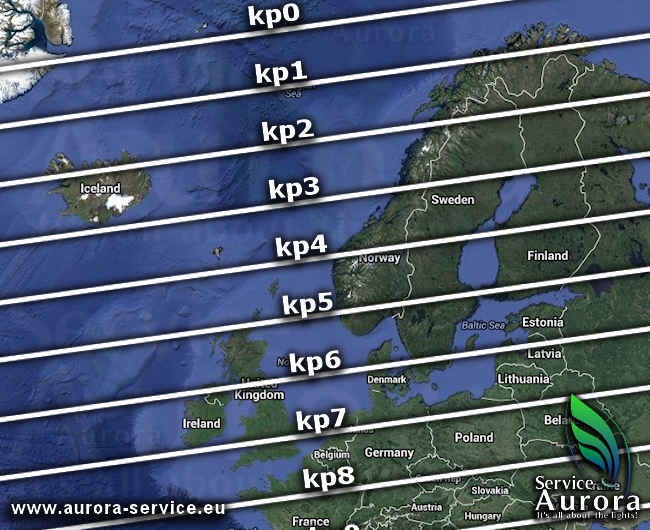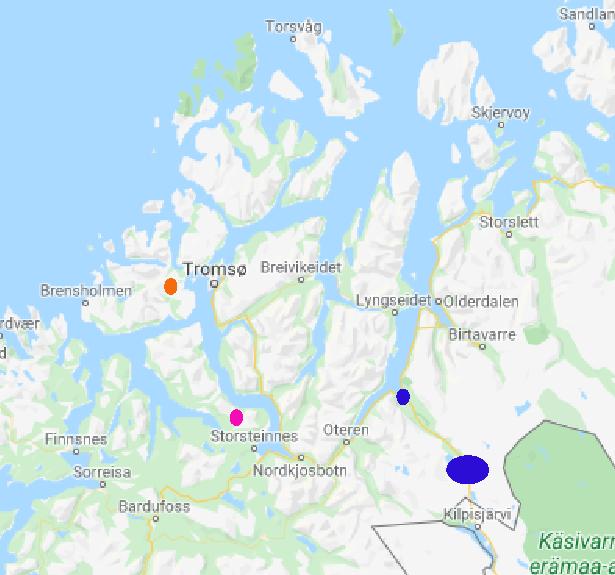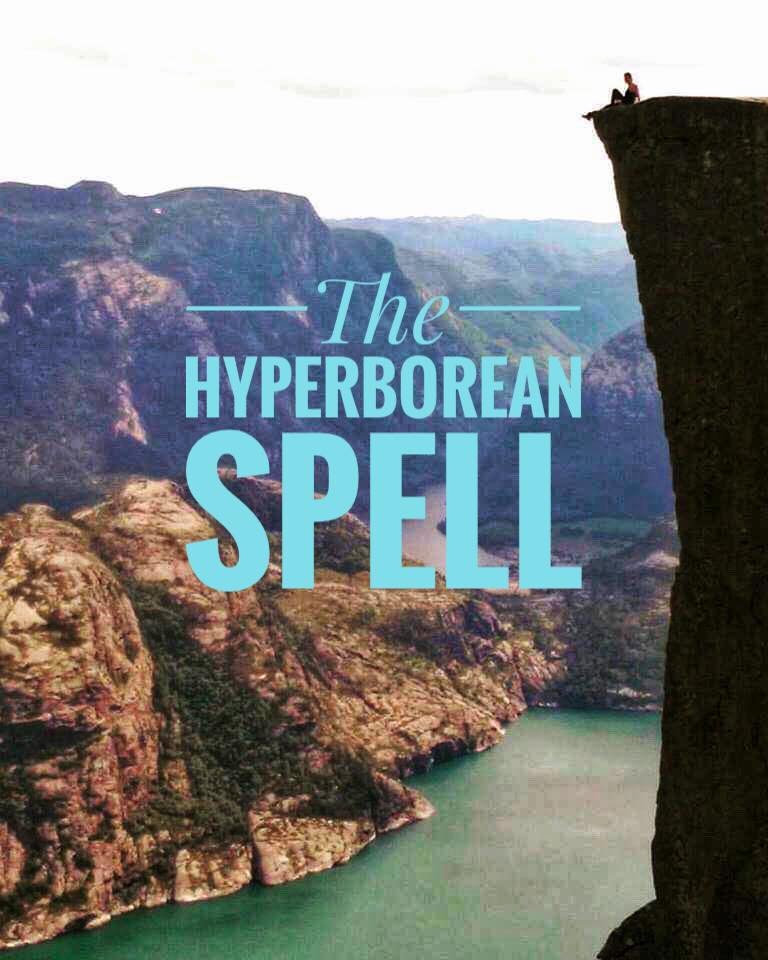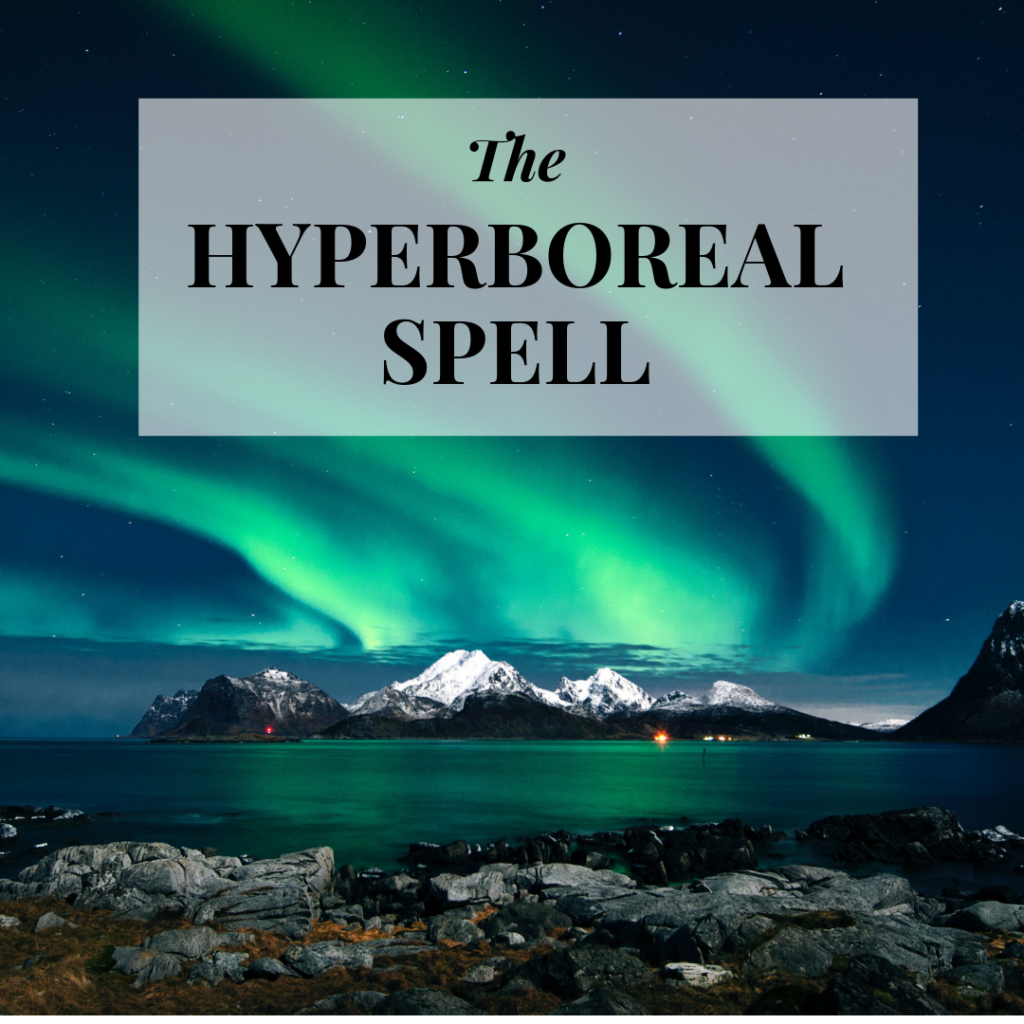Without a tour

Find the Northern light on your trip to Tromso without a tour
Hi. As you know we had a low cost trip to Tromso. In Norway if you’re not rich you really need to go Low cost to not spend all your income.
Also we like our privacy, and as there are obvious advantages in going on a tour to see the Aurora borealis, we preferred to take our changes and unfortunatly, not get amazing photos (we only had our cellphones) but not share the moment.
So here are some basics on where to see the northern lights…and a useful map of the best spots
The Aurora Borealis
To best know something you need to understand it.

The northern lights are a natural phenomenon caused by high-speed electrically charged particles bombarding Earth’s atmosphere. As a result of this bombardment, the oxygen and nitrogen atoms in the atmosphere emit light which we then see as the aurora (a similar process happens in neon light tubes). The bombarding particles actually mainly originate all the way from the Sun. As a result of the Sun’s energy production there is a continuous flow of electric particles, or plasma, which we call the solar wind, flowing from the Sun into the interplanetary space and beyond. The solar wind carries, along with its plasma, the magnetic field of the Sun.
As the solar wind reaches Earth, it encounters the magnetic shield that is formed by Earth’s magnetic field, deforming it by pushing it from the dayside and stretching it into a long tail on the night side. Under certain circumstances the solar wind then interacts with Earth’s magnetic field in a way that allows some particles to reach Earth’s atmosphere on the dayside polar regions, causing the so-called daytime aurora (these can be seen, for example, in Svalbard during winter when it is dark even during the daytime, even though they are not as strong as the nigh-time aurora). As the solar wind blows towards the tail of Earth’s magnetosphere, the resulting pressure in the tail can energize some particles and following Earth’s magnetic field back to the polar regions, they reach the atmosphere causing the usual night time aurora.
The regions where the particles finally hit Earth’s atmosphere causing aurora are called the auroral ovals, located around the northern and southern geomagnetic poles. Although we currently have a good overall understanding of how the aurora are formed, some details still remain a mystery. For example, we actually do not quite know the details of what happens in the interaction between the solar wind and Earth’s magnetic field, or what exactly takes place in the magnetic field’s tail region – http://site.uit.no/spaceweather/aurora-borealis/
The sun cicles on the Auroras
Once every 11 years the sun enters a period of solar maximum with many large sunspots and high solar activity – Solar Cycle. During any given Solar Cycle, the number of sunspots rises to a maximum (Solar Maximum) and falls to a minimum (Solar Minimum). When there is an eruption in the Sun, it will take roughly 1-3 days for it to reach Earth. The larger the disturbance in the solar wind (and the eruption in the Sun) is, the more it warps Earth’s magnetic field, causing the auroral ovals to expand, and the further south we can see the aurora. In this way the occurrence of aurora is closely tied to the level of solar activity. The solar maximum mostly benefits areas where the Northern Lights are rarely seen as the Northern Lights Oval extends further south during this period. Consequently, the solar maximum has little impact on areas that are usually located within the Northern Lights Oval.
While there are constant changes in the level of solar activity, on a longer timescale the activity follows an 11-year cycle. Luckily this does not mean that the Aurora would completely disappear even during low solar activity, but we can still enjoying spectacular auroral displays even though we are close to the solar activity minimum. Solar eruptions large enough to cause aurora can happen any time! We saw the Aurora in 2019 – a year of low solar activity.
Another cicle is the 27 days cicle. This is due to the fact that the Northern Lights are strongest when an active area on the surface of the sun is facing the Earth. The sun rotates once every 27 days allowing for a strong northern light activity on that day.
Due to a partially unexplained correlation between the sun’s magnetic field and the angle of the Earth’s rotational axis, there tends to be particularly powerful Northern Lights activity in the months around the spring and autumn equinoxes, i.e. in February-March and September-October.
The colours

We have all seen the amazing green aurora photos. Yet sometimes they appear as purple, pink, blue, red and even yellow or white. These are not photoshop effects. The majority of auroral displays are predominantly green for two reasons, the first of which is that the human eye detects green more readily than other colours. This is why photographic images of the Northern Lights will often show colours that were not visible at the time, to the naked eye. The second, and main factor in determining the colours of any given display is the altitude at which the solar particles collide with our atmosphere. Different gases prevail at different altitudes and in varying concentrations and it is the collision which “excites” these gases that determines the colour of the Aurora.
The variation on colour are a result of the energy absorption by different chemical elements of the atmosphere at different altitudes. The most common color green and the occasionally visible red, above the green, are both coming from oxygen atoms. Interactions with nitrogen produce red, violet, and occasionally blue colors.
The type of collision also makes a difference to the colors that appear in the sky: atomic nitrogen causes blue displays, while molecular nitrogen results in purple. The colors are also affected by altitude. The green lights typically in areas appear up to 150 miles (241 km) high, red above 150 miles; blue usually appears at up to 60 miles (96.5 km); and purple and violet above 60 miles.
These lights may manifest as a static band of light, or, when the solar flares are particularly strong, as a dancing curtain of ever-changing color.

How to see the light
When trying to chase a natural phenomenon there are some basics you need to think before you plan your trip. Where to see the northern lights comes second to the actual weather conditions for the lights to be seen.
1 – The weather
This is probably the most important factor in seeing the lights. Try to use sites to predict the weather on the period you plan on visiting the north. We all know that they aren’t 100% predictable but they help. Look for clear skies. If it rains or snows a lot then there are clouds…and you just can’t see the lights with cloudy skies. Doesn’t really matter the index on auroral activity if you can’t see the sky.
For weather we used ACCUWeather – we planned the trip with 1 to 2 months in advance and the weekend ended up with clean skies just as foreseen. So I trust them. But still advise to check as many sites as possible and as close to the date you can plan the better. More chances of weather changing if you’re planning 5 months in advance.
2 – Aurora prediction
Now, after you checked the weather also check the seasons when aurora prediction is optimal. Technically the aurora borealis is always present in the sky, above the polar circle – area of a Kp index of 0 to 2. The kp index measures geomagnetic activity on a scale from 0 (low) to 9 (high). This means that even when the geomagnetic activity is very low you can still see auroras in this area. If you look at the map below you will understand that to see an aurora in Lithuania you will need an índex of 7. And an índex above 5 means that there is a geomagnetic storm.

But in the north the midnight sun phenomenon makes the summer a period with so much light that you just can’t see the lights. Therefore the best period goes from September til end of March.

Plan your night! Check what time is best for the show
When you are there it’s good to keep an eye on the predictions. That way you can enjoy your dinner and make plans for the night. We used this site (they are based on this one) to check the best times to see the lights, since they do a prediction up to the next 4h. It’s pretty easy to use, you just need to locate where you are in the map and check when the green band is over that ares. That is when there will be visible auroras.
3 – Location
This is what you came here for…where to see the northern lights!
Now the basic is to run away from the lights. And this means run away from city center. So a car is useful. As much as you can be super lucky and see it from the city, the experience is just not the same. Lights interfere on how we perceive the night sky, the starts and therefore the Aurora borealis.
The aurora is a phenomenon that appears in specific parts of the sky. To have an optimal view of the phenomenon you should look for areas with larger visibility of the sky. So areas of flat land or areas on high terrain. Be careful with mountain areas cause they might decrease your vision of the sky.
We went to Tromsø so I can only give some local advises about this place. But with google maps, some internet and local advises you can get good places anywhere to see the lights on your own.
Tromsø

Orange dot – Closest stops are in the islands north and west of Tromsø , like Kvaløya, Ringvassøya and Sommarøy. There are some nice places there and you can explore around them. The beaches on the western coast have a good reputation for seeing the lights has long as there aren’t lights around.
Pink dot – If from there you go south taking the 858 road you can have a pretty good view of the skies. It’s not so easy to find spots to stop the car if there is a lot of snow. But we ended up finding some nice spots in smaller roads.
Blue dots – If you rather go on the other direction, towards Finland, we found some amazing spots around the fjord areas. But there might be higher mountains surrounding that area, so choose well. Also it´s a good road to see wildlife, like reindeers and moose. And that’s just as amazing as the lights.
Curiosities
For millennia, the lights have been the source of speculation, superstition and awe. Cave paintings in France thought to date back 30,000 years have illustrations of the natural phenomenon.
As early as 1616, the astronomer Galileo Galilei used the name Aurora Borealis to describe them, taking the name of the mythical Roman goddess of the dawn, Aurora, and the Greek name for wind of the north, Boreas.
The phenomenon has intrigued and fascinated many in the past, and they appear in the literary work of Aristotle, Descartes, Goethe and Halley.
Even tough the most famous Auroras are the northern ones, this phenomenon also appears around the south polar region. These are the aurora australis, or the southern lights. But, since the South Pole is even more inhospitable than the North Pole, it is often trickier to view the southern lights.
If you wanna know where to see the northern lights without a tour, on your own…you came to the right blog 😉
I hope it helps 🙂 And please leave your best spots in the comments.


